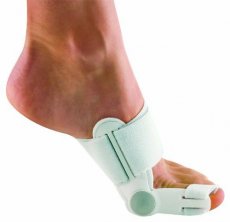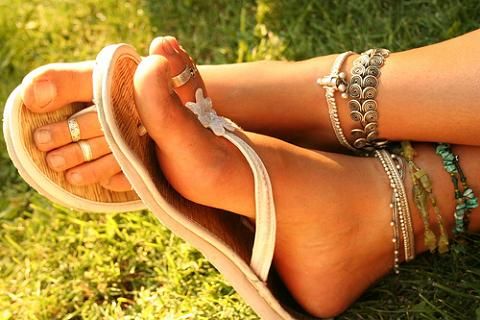Useful facts about the structure of the foot
Last reviewed: 23.04.2024

All iLive content is medically reviewed or fact checked to ensure as much factual accuracy as possible.
We have strict sourcing guidelines and only link to reputable media sites, academic research institutions and, whenever possible, medically peer reviewed studies. Note that the numbers in parentheses ([1], [2], etc.) are clickable links to these studies.
If you feel that any of our content is inaccurate, out-of-date, or otherwise questionable, please select it and press Ctrl + Enter.

To have healthy feet, it is very important to know their structure. On the structure of the foot there are many interesting facts that will help you correctly treat your health and avoid many diseases, as well as overloading your legs.

Nerves located in the feet
Nerve endings, located in the feet, allow the muscles to transmit signals to different parts of the brain. Thanks to the nerves are transmitted and painful impulses, from this person feels pain in the feet.
In the foot there are 4 nerves that perform the leading roles. They are located in the region of the tibia, near the tibia and in the depths near it, as well as near the calf.
When the nerves in the foot become inflamed and deformed, the foot is very sore. Causes of irritation of the nerves - pressure from uncomfortable shoes, awkward posture, pressure on the feet from constant walking, standing or sedentary work in the wrong posture.
Nerves can be irritated and squeezed from too tight socks, elastic stocking stockings and synthetic materials. On the legs there are swelling, nerves from this are irritated even more and the foot is very sore.
To protect the nerves in the feet from inflammation, you need to wear comfortable shoes, socks made of natural fabric, comfortable stockings in size, avoiding long standing or sitting.
Tendon tendons
The tendons have a very important role - they serve as muscle anchors to the bones. The tendons of the foot look like fibers of light color, which are strong as a line and very flexible. Because of this property, they can stretch when the leg muscle is stretched. But with this property of fibers you need to be very careful: when the tendon stretches too much, it's very painful.
Then the body can respond with inflammation of the tendon.
Ligament of foot
Bunches are much thicker than tendons, but they are not so elastic, they do not stretch so well. But they are flexible. The ligaments serve to support the joint in a certain position, to give it strength and support. Ligaments connect the bones to each other with the help of joints.
If the leg is damaged, for example, injury, shock, awkward position, the ligament can be stretched or torn, and this is very painful.
So, the difference between ligaments and joints is that the ligaments connect only bones with each other, and tendons - bones and muscles. The ligaments are thicker, and the tendons are thinner.
Even more facts about ligaments and tendons
Both ligaments and tendons of the leg consist of collagen fibers, which are quite flexible and durable. On the condition of collagen, it depends how flexible and elastic the tissues in which this collagen is are. If the collagen fibers are damaged, then the muscles, ligaments, and tendons will not be elastic, but will be weak, sluggish, the person will not be well served by the legs.
Bunches and tendons can be more durable (if you train and harden) and less strong (if you are sedentary or already in age). If the ligaments and tendons are thin, then they may not be as strong as those that are thicker.
 [1],
[1],
What are the tendons
They come in several forms, each with its own name. For example, the Achilles tendon is the largest. It controls the movement of the foot when you walk, run or even move your legs.
It is secured from the heel bone to the triceps muscle in the region of the shin. This tendon is like a rope, when a person wants to rise on tiptoe. Then the triceps muscle contracts, and the traction force moves the tendon toward the foot. The person rises on the socks.
The tendons of the muscles are attached to the bones of the phalanx, and when you bend or unbend your toes, this is done through the tendons. They connect the bones of phalanges and bones on the sole. Another tendon serves to bend and unbend the foot. It is called the tendon of the anterior tibial muscle.
There are tendons that serve to turn the foot inside and out. They are connectors of two bones - a long fibular muscle and a short one.
Cartilage in the biomechanics of the feet
Cartilage is a dense tissue that has the property of covering the head of the bone at the location of the joint. Cartilages look like a piece of white bone on her head.
Cartilages provide a smooth motion to the foot and other parts of the body, because when the bone is rubbed against the bone, the cartilage gives a sliding effect. They protect the bones from inflammation, when the bones rub against each other, because they play the role of a partition between them.
Joint Capsules
The bones of the foot are connected by ligaments, some of them help the capsules of the joints to be stronger, fixed in a certain position. The joint capsule is a small sac, closed tightly. Inside this pouch is a liquid by which the cartilage of the joints is moistened to reduce friction between them. This fluid is called synovial.
Structure of the foot joints
Joints are a group of bones that connect with each other. When the joint is dislocated, this is a very painful phenomenon. Without medical assistance can not do. Joints serve to ensure that a person can move in any direction, any part of his body, where there are bones, including the legs.
Ankle
The ankle is one of the most important and large joints of the foot. It connects the foot and foot of the foot. When an ankle is deformed or traumatized, a person suffers severe pain, he is unable to walk. If the ankle is damaged, one foot can not step on it, and the weight is transferred to a healthy foot. The person begins to limp.
But in this situation it is better not to walk at all, keeping the foot in a calm position to reduce the load on the ankle. And get medical help from a traumatologist. Otherwise, the mechanical movements of both legs will be wrong and will pose a threat to the entire body.
Subtalar joint
This joint extends from the joint of the heel to the talus bone of the foot and serves to allow the foot to turn inward and outward. These movements are called pronation. If the pronation is broken, then the foot gets an extra load, it threatens to break the balance and dislocation.
Wedge-scaphoid and subtalar joint
These joints are very strongly related to each other. They can substitute each other for work, in other words - compensate each other's movements. These joints serve to enable a person to perform complex movements with his feet. For example, in complex dance or wrestling, or walking on a rope.
When joints often replace each other, they wear out, and deformation of the foot occurs. Therefore it is very important to give joints a rest and at strong physical exertion to give rest stops.
Plus-phalanal joints
There are five joints on each finger. They connect the heads of the bones with the phalanges of the toes. These joints are very heavy, because they have the weight of the whole body. Therefore, they are very vulnerable, especially to infections and various diseases such as arthritis, radiculitis, polyarthritis, gout.
Bones in the foot
The foot is amazing in that it contains ¼ of the bones that are in all parts of the body. There are neither more nor less of them. Of these, 26 bones are the two largest - medial and lateral. Rarely, but it happens that a person has a few small additional bones, except the basic 28-i. They are called extra bones. They rarely cause any deformation, so they are safe.
Joints, bones, cartilages, ligaments, tendons, nerves are parts of the foot, the location and characteristics of which you need to know. Then a person controls his movements and can avoid unnecessary injuries and illnesses.

